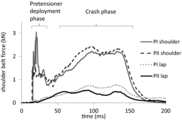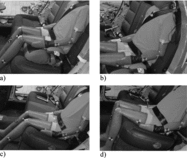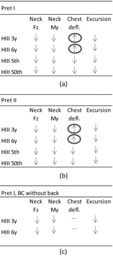Figures & data
Table 1. Sled test matrixa



Table 2. Loading to the neck and chest at pretensioner peak and at crash peak for all sled tests, difference in max head excursion relative the test without pretensioner, as a function of different ATDs and different pretensioners
Table 3. Loading to abdomen and chest in static pretensioner test with Q10, varying booster cushion (BC) or car seat and ATD position (normal or out-of-position)
Supplemental material
